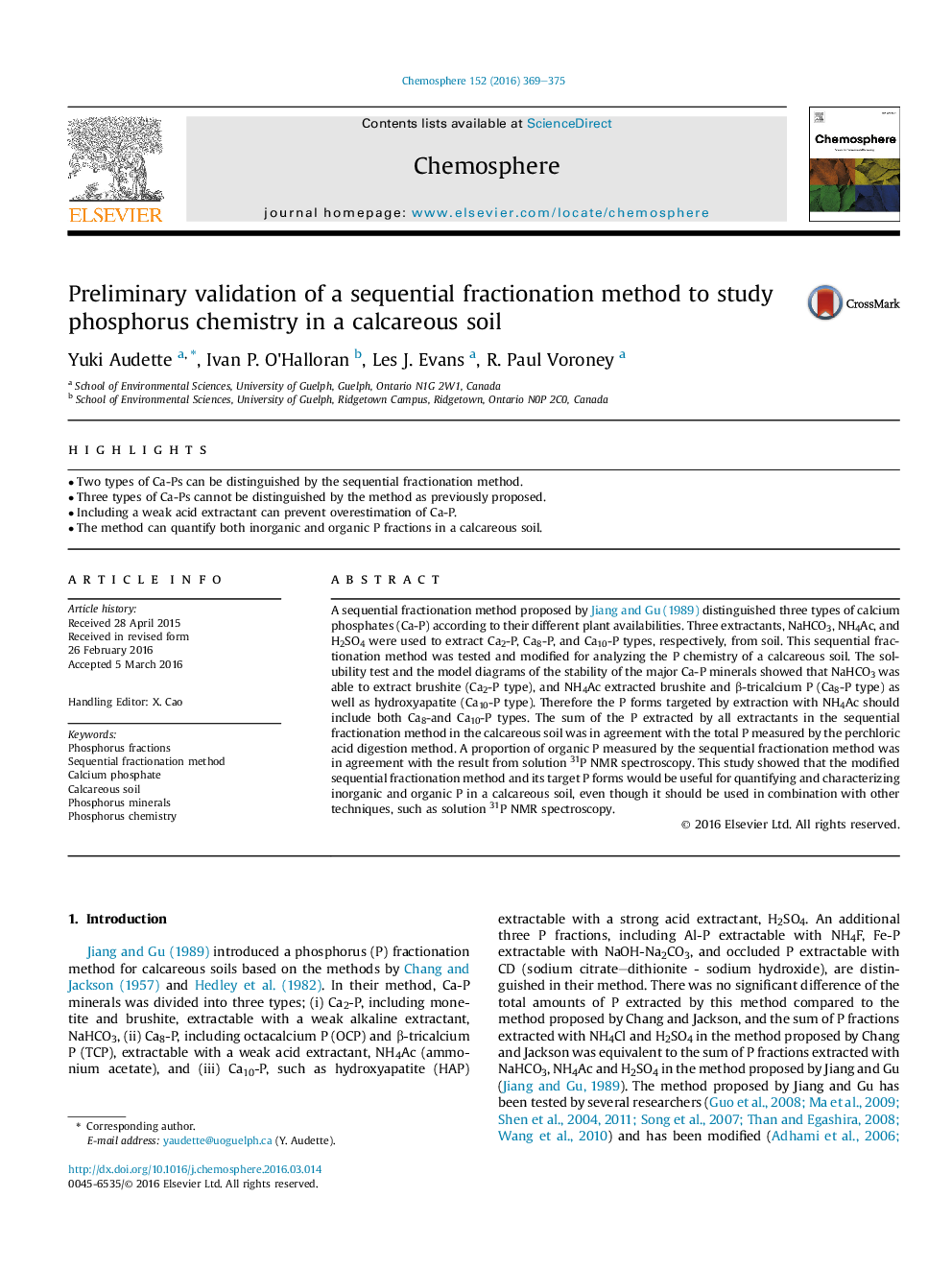| Article ID | Journal | Published Year | Pages | File Type |
|---|---|---|---|---|
| 6306965 | Chemosphere | 2016 | 7 Pages |
Abstract
A sequential fractionation method proposed by Jiang and Gu (1989) distinguished three types of calcium phosphates (Ca-P) according to their different plant availabilities. Three extractants, NaHCO3, NH4Ac, and H2SO4 were used to extract Ca2-P, Ca8-P, and Ca10-P types, respectively, from soil. This sequential fractionation method was tested and modified for analyzing the P chemistry of a calcareous soil. The solubility test and the model diagrams of the stability of the major Ca-P minerals showed that NaHCO3 was able to extract brushite (Ca2-P type), and NH4Ac extracted brushite and β-tricalcium P (Ca8-P type) as well as hydroxyapatite (Ca10-P type). Therefore the P forms targeted by extraction with NH4Ac should include both Ca8-and Ca10-P types. The sum of the P extracted by all extractants in the sequential fractionation method in the calcareous soil was in agreement with the total P measured by the perchloric acid digestion method. A proportion of organic P measured by the sequential fractionation method was in agreement with the result from solution 31P NMR spectroscopy. This study showed that the modified sequential fractionation method and its target P forms would be useful for quantifying and characterizing inorganic and organic P in a calcareous soil, even though it should be used in combination with other techniques, such as solution 31P NMR spectroscopy.
Related Topics
Life Sciences
Environmental Science
Environmental Chemistry
Authors
Yuki Audette, Ivan P. O'Halloran, Les J. Evans, R. Paul Voroney,
